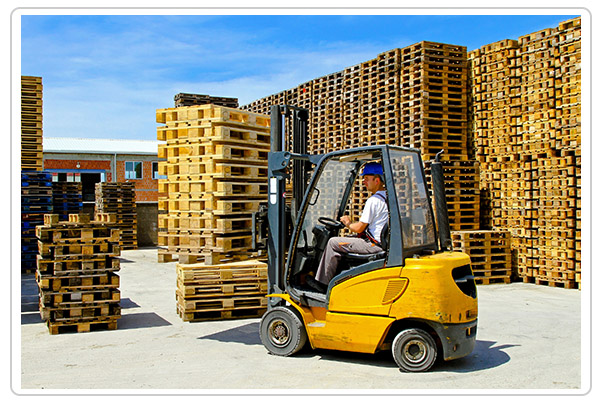Pallet dimensions and types

Pallets are one of the most important elements used in the transport of various types of goods. Regardless of the type, they are designed in such a way that they can be transported by forklifts. Nevertheless, the pallets differ in dimensions and material from which they are made.
EURO PALLETS - (WOODEN)
They are usually made of softwood (spruce and pine) or hardwood (birch). In addition, if the pallets must meet sanitary standards, chemicals are used to eliminate the possibility of pests infesting them. Currently, the most popular pallet in Europe is the EURO pallet, the production of which began in 1950. Their dimensions are currently 120 x 80 cm, they are also marked with the abbreviation "EUR", hence their name. Below is a table with the most popular dimensions of wooden pallets:
|
Name |
Dimensions |
|
Euro Pallet |
120 x 80 x 10 cm |
|
Industrial Pallet (ISO) |
120 x 100 x 100 cm |
|
IBC container |
120 x 100 x 118 cm |
|
Enlarged Euro palette |
120 x 120 x 100 cm |
|
Gitter Box |
120 x 80 x 90 cm |
|
1/2 Euro pallet |
80 x 60 x 10 cm |
PLASTIC PALLETS
There are also other types of pallets, due to the material they are made of. Examples of such pallets are, among others plastic pallets, which are most often used in the food industry, because it is easier to care for their sterility than in the case of wooden pallets. In addition, they are lighter, but at the same time less resistant to damage than Euro-pallets.
METAL PALLETS
The last example is pallets made of metal. These are the most damage-resistant pallets. Also easy to keep clean like plastic pallets. However, their weight is also a disadvantage, so they are rarely used in transport. They are most often used in heavy, metallurgical and automotive industries.
All palettes described in the table can be found in Smartload. Come in and check how many pallets will fit in the space of your choice.